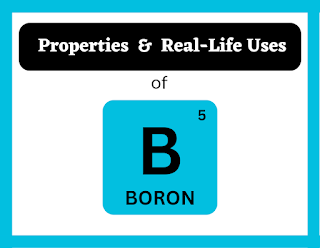Boron: Uncovering The Properties and Real Life Applications
Boron is a chemical element that belongs to the group of metalloids in the periodic table. It is a relatively rare element that is mostly found in minerals and rocks. In this article, we will explore the properties of boron and its real-life uses.
Properties of Boron:
Chemical Symbol: B
Atomic Number: 5
Atomic Mass: 10.81
Electron Configuration: [He] 2s2 2p1
Melting Point: 2075°C
Boiling Point: 2550°C
Density: 2.34 g/cm3
Boron has an atomic number of 5, which means that it has five protons and five electrons. It is a relatively light and hard element with a low density, and is also an excellent conductor of heat and electricity. Boron is also known for its ability to form strong covalent bonds with other elements which gives it unique properties.
Real-Life Uses of Boron:
Agriculture: Boron is an essential micronutrient for plants and is often used as a fertilizer to promote healthy growth. It is also used in the production of herbicides and pesticides. As well as used in the preservation of wood and other materials.
Glass and Ceramics: Boron is used in the production of glass and ceramics due to its ability to withstand high temperatures and resist chemical corrosion. Borosilicate glass is used in laboratory equipment and is made from a mixture of boron and silica.
Nuclear Power: Boron is used in nuclear power plants as a control rod to absorb neutrons and regulate the rate of fission reactions. It is also used in the production of neutron detectors.
Semiconductors: Boron is used as a dopant in the production of semiconductors, where it can increase the conductivity of the material. It is also used in the production of solar cells and other electronic components.
Flame Retardants: Boron compounds are used as flame retardants in a range of products... including furniture, textiles, plastics. They work by reducing the flammability of the material and preventing the spread of fire.
Sports Equipment: Boron fibers are used in the production of sports equipment such as golf clubs and tennis rackets, due to their high strength and low weight.
In conclusion, boron is a versatile element that has a range of real-life uses across various industries. From agriculture to glass and ceramics, nuclear power to semiconductors, flame retardants to sports equipment, boron plays an essential role in modern technology and everyday life. Despite its usefulness, boron can be toxic in large doses and must be handled with care to prevent adverse health effects.
You can also explore other elements






0 Comments